2022 Week 5: Youth and Education
Cionne Gates | By Peaceful Means
Everyday, I keep trying to find ways to challenge me outside of my comfort zone by setting higher expectations for myself in both professional and personal disciplines. This internship experience has made me retrospective in my approaches to children. For instance, my class schedule consists of intimate discussions in small groups, an interactive workshop either outside or standing up, then coupled with a drawing activity to engage their different interests. Recently, my supervisor also applauded me for being the first CIIP intern to lead my own class, so I feel even more accomplished in achieving the goals and concepts I wanted to learn for this summer. Especially since I’m tasked with leading the oldest age group (10-14 years old), this is the most primitive point of adolescent in terms of understanding yourself and the world around you, and this provides me with first-hand experience of offering healthy resolutions to petty conflict that has been arising between the campers at this age. Ultimately, I hope to become a child psychologist or social worker that has effective problem-solving skills by understanding the best options to give to a child in unique circumstances. More so, this opportunity has explored a lot of social-emotional learning for me in all different age groups. On Wednesdays, we have staff meetings where we discuss the shortcomings or behavioral attitudes being demonstrated by the kids, and this environment promotes collaboration amongst the staff of recognizing alarming behaviors that are reflective of harmful residences. Working with multiple ages simultaneously forces you to consider multiple perspectives of development in regard to the formation of self as well as historical social hierarchies in countless institutions. Essentially, I will employ the relevant skills of fostering inclusive environments, navigating conflict-resolution, and innovative approaches for youth engagement as I immerse myself in professional fields of interest. Similarly, I will hope to maintain this honest points of reflection as motivation to continue to grow into the best person I can be.
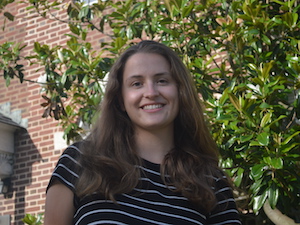 Hélène Girard | Village Learning Place
Hélène Girard | Village Learning Place
I’ve talked about my own identity a lot, but what about our class? Our crude class demographics are pretty uniform. Of the ten students, 70% are female, 90% are black, and specifically, 60% are black females. The class personalities are split interest me more. The students can now be distinctly separated into two groups: the in-group and the misfits. I don’t mean either term as derogatory; I really like all the kids (even the ones who resent me for enforcing the rules). It’s just that half of the class seems to be very comfortable with where they are, and the other half all seems to be some kind of “other.” This separation fascinates me, and I’ve been trying with great effort to figure out why they chose to divide themselves up the way they did. That means that a substantive part of my generalizations is from observations, but I did fill in the cracks with imagination and my own memories of being a middle-schooler.
The in-group only slightly outnumbers the misfits, 6 to 4, but the in-group has a strong esprit de corps, so their presence is a lot more uniform and powerful. They’re both probably have an equal average school level, but the misfits are more outspoken about “weird” interests: books, cars, singing in public, being an artist. They also have the youngest and oldest classmates. The in-group has inside jokes, and if someone is laughing, it’s probably one of them. They all get bored quickly, but when you tell someone in class to pay attention (and put away whatever is distracting them), a misfit will pretend that they didn’t know, and an in-group kid will tell you it’s not fair. Both of them have strong girl leaders, and the group members vie for their respective attention. The in-group leader is the strong helm of her constituents, but the misfit leader can be more elusive. She’s deadly smart and giggles when she makes people fumble over their words. She’ll change the rules and confuse the other person into agreeing with her. It’s a masterclass in politics. The in-group leader will pick on one of the boys for a bit, but the fire is more often towards someone on the outside; they flock together to make decisions. The misfit leader controls from above; the in-group leader rallies her troops.
On the first day of class, I would say the in-group had 3 confirmed members and the misfits 1. By the end of week 1, it was probably in-group: 5 and misfits 2. Week 3, in-group 6, misfits 3, and a singular student who hadn’t quite found her niche. After a serendipitous trip to the zoo, we arrived pretty solidly at the current numbers. Grey-area members went to their respective spots for both push and pull factors, so I would be surprised if memberships changed at this point.
At first I felt that a certain je ne sais quoi to the groups that was partially race-based. The two kids raised by white parents were both misfits, so that must mean something, right? And it might, a wiser person would know, but after further reflection, I don’t think those two kids wouldn’t be in the other group anyways. Their interests are far-out, and they’re not trying to be coy about it (not that they should). Their friendship is not dictated by their upbringings but rather by their innate personalities.
Both groups will stand up for their own against an adult, but the in-group stands for their own against the other group in a way that doesn’t happen in the misfits. I think the other misfits just don’t want to inflict crossfire on themselves. They instead offer a landing spot for their friend to complain when they get back to home base and mostly rally in moments of healing.
I would love for them to see their similarities: they all would rather be left to their own devices, pun intended. In fact, right now, that’s what they all giggle about together: when the teachers get absolutely no response for an icebreaker activity and sort of just flounder around trying to garner support. Hopefully they can use that more in the future and the leaders can appreciate each other’s biting wit. I hear about moments of tenderness when two otherwise indifferent kids are waiting outside before school. They don’t genuinely dislike each other; they’re just on different sides of the classroom ecosystem. I would love to have them involved in groups where they are forced to be directly near someone different to them. Mr. Daniel and I moved all the desks together in order to make that happen. I can’t wait until they see it in the morning. They don’t all have to be friends just yet. In the meantime, we just have to manage co-existence, which is a momentous goal on its own.
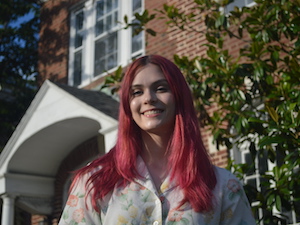 Helen Lacey | Dent Education
Helen Lacey | Dent Education
It is incredible to see how the community at Dent Education grows stronger each week. While some groups of students in our pod built community immediately, others took some time before opening up. However, going into the third week of the program it seems that every site has built a unique dynamic that supports the specific needs of students and makes them feel safe and comfortable. We had our first global social this week at Patterson Park, and there was a great turnout. I think the social helped the Denters expand the connections and energy they bring to their own sites to a variety of other sites. I hope that future global socials bring out an even greater number of students.
In terms of what I have learned this summer that I will use in the future, working with Dent has inspired me to be more of a self-starter. In my role as a fellow, there is no rigid structure to my day and I have the opportunity to organize my own schedule. While this freedom felt intimidating at first, I believe I am doing well at coming up with my own personal projects and seeking out places where I can help. I also think that on a personal level, working at Dent has taught me that while I am better at working on administrative tasks behind the scenes, I am also capable of leading activities with students. Occasionally stepping in to facilitate closing or opening circle this week has helped me improve my ability to interact with students, something that I felt unsure of when starting at Dent. One other thing Dent has shown me is the importance of play: I’ve seen students who frequently do movement games and take breaks seem more connected, engaged, and creative. It is a healthy reminder that even as an adult it is important to have fun often (even while at work).
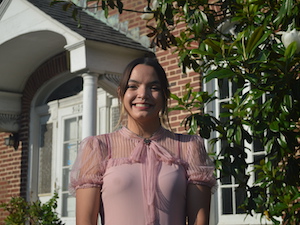 Mahalia Munalem | Hampden Family Center
Mahalia Munalem | Hampden Family Center
I learned that connection is key in creating a caring and compassionate atmosphere. Throughout my internship, I have seen the struggles of young individuals as they navigate our return to an in-person social network rather than a virtual one. For example, my advisor decided to make summer programming a device free time until the last hour when the campers are in the computer lab. Although some kids had a difficult time adhering to this rule and some were adamant about playing on the computers sooner than we were supposed to, the lack of face-to-screen time led to an increase in face-to-face time. Initially, interacting with other children was challenging for a couple of the campers but over the course of the summer, I have observed an increase in some of the sensitivity they have for each other. For example, we have had to have several conversations about personal space, respect, and the power of words, with the youth because they were not so kind towards each other. However, by our 3rd week of programming the expectations – such as the 3 “be’s” being “Be safe, Be respectful, Be responsible” – had been explained enough to establish the boundaries that were previously being broken. Creating a safer space for the campers to stay in really relied on a web of connections. The communication between staff, volunteers, and parents; the communication between adults and kids; and most importantly the communication between campers themselves were all crucial to create a space of compassion. From my experience at the Hampden Family Center, I have witnessed the power of human connection in shaping a shared space and some day I wish to see a more intentionally connective environment in American public schools. Currently, with class sizes of 30+ and hundreds of students per school counselor, Educators across the country have way too many students to deeply engage with every one of them in a meaningful manner.
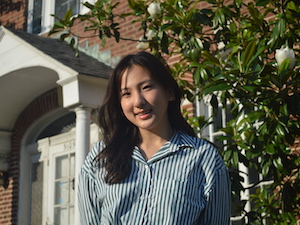 Sophia Park | Child First Authority at Calvin Rodwell Elementary/ Middle School
Sophia Park | Child First Authority at Calvin Rodwell Elementary/ Middle School
Week five has to have been the most difficult week for me. For me, I do not intend to go into teaching, but I am interested in youth development itself. I want to understand the socioeconomic factors that influence development, and help those with neurodevelopmental disorders succeed in our current society. With this in mind, I originally decided to pursue this internship to learn more about how the education system can affect how youth develop, and how to create a more equitable system. Going into this internship, I think I failed to realize how many aspects go into providing education. Calvin M. Rodwell Elementary and Middle School is a recently renovated school that many families have been trying to get their children into. This week, I was delegated many administrative tasks, including answering phone calls. I was quickly overwhelmed by the volume of phone calls and my inability to answer many of these questions. The woman in charge of enrollments and registration was on vacation that week, and without her, so many things were unable to be done. Beyond teaching, enrolling students into these schools is such a feat. The amount of paperwork and time that goes into registering each child is immense, and the work is incredibly tedious. I felt awful when I could not answer people’s questions about enrollment and faced a lot of angry parents, asking to be transferred to a principal or some administrative person. These schools are not just places for these students to learn but they are also places that serve the public. Therefore, administration is so incredibly important in order to ensure all students are being accounted for. Each week I learn more about the education system, and I am hoping I can carry these experiences with me in my future endeavors. I am not sure whether I see myself pursuing a medical degree or a PhD but I hope to be able to inform policies that help both healthcare and education systems.
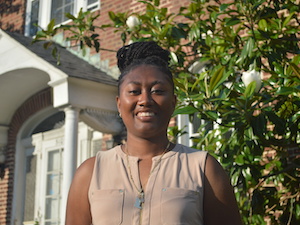 Abigail Quashie | St. Francis Neighborhood Center
Abigail Quashie | St. Francis Neighborhood Center
I think that I have always struggled with readjusting plans. In almost every aspect of my life, be it academic, personal, spiritual, etc., when I set my mind to something I have to get it done. And I have to get it done in the way that I outlined for myself before I even started the mission. I have been learning though, especially through this internship, that my plans will need more reevaluating than I anticipate. I have been trying to change my perspective so that when I do need to step back and reevaluate, I view it less as a failure and more as a step towards an ultimate success.
The first session of the program is over, and in regard to my service-learning lessons, I had some hits, but I also had some misses. For example, I made sure to take the advice of chunking up the lesson time so that the kids would not be sitting still for prolonged periods of time. Despite that consideration, I sometimes noticed the kids would still get restless during the lessons, especially towards the end. In the past, I would have certainly viewed my inability to grasp their attention for long as a failure. Instead, though, I am looking at it as maybe they needed a more dynamic lesson with different breaks and I am going to use that information to, hopefully, make the second session better.
During the semester, it is easy to view your tests and assignments as measures of your worth, and I admit that I often fall victim to the mentality that a not-so-stellar performance makes me a bad student. This internship has been really good at showing me that although everything might not go my way or go perfectly the first time, I can learn from every experience and build up. So, I hope that wherever life ends up taking me in the future, I can look back to this summer and remember that life is about perspective and there is nothing wrong with reevaluating and changing in order to make something greater.
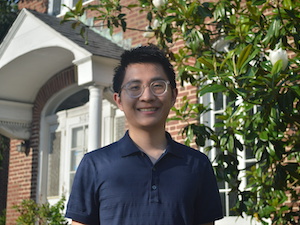 Ethan Wang | Code in the Schools
Ethan Wang | Code in the Schools
As each day slips by, I find myself amazed that I’ve already been with Code in the Schools for five weeks. It feels like I started yesterday, because I’ve been enjoying every moment of my internship.
I learned about the constant communication that is required to keep a nonprofit organization running and achieving its planned goals, from various Slack channels to check-in meetings. Making sure everyone is on the same page and resolving issues as a group is one practice that I will be using in the future. I have learned how crucial communication is, with parents, with youth, with parent organizations (YouthWorks), and organizations that help run CodeWorks. Miscommunication or a simple mistake can easily snowball into a big problem and cause YouthWorkers in troublesome situations to be constantly redirected to different supervisors in different organizations.
From sitting in social and emotional learning sessions (SEL) at the end of the day, I am glad to have met so many incredibly talented youth in different aspects, not just sharing an interest in programming. I have taken from this internship an appreciation for the access to digital tools that I currently have and a determination to continue serving the community in closing the digital gap in Baltimore.
